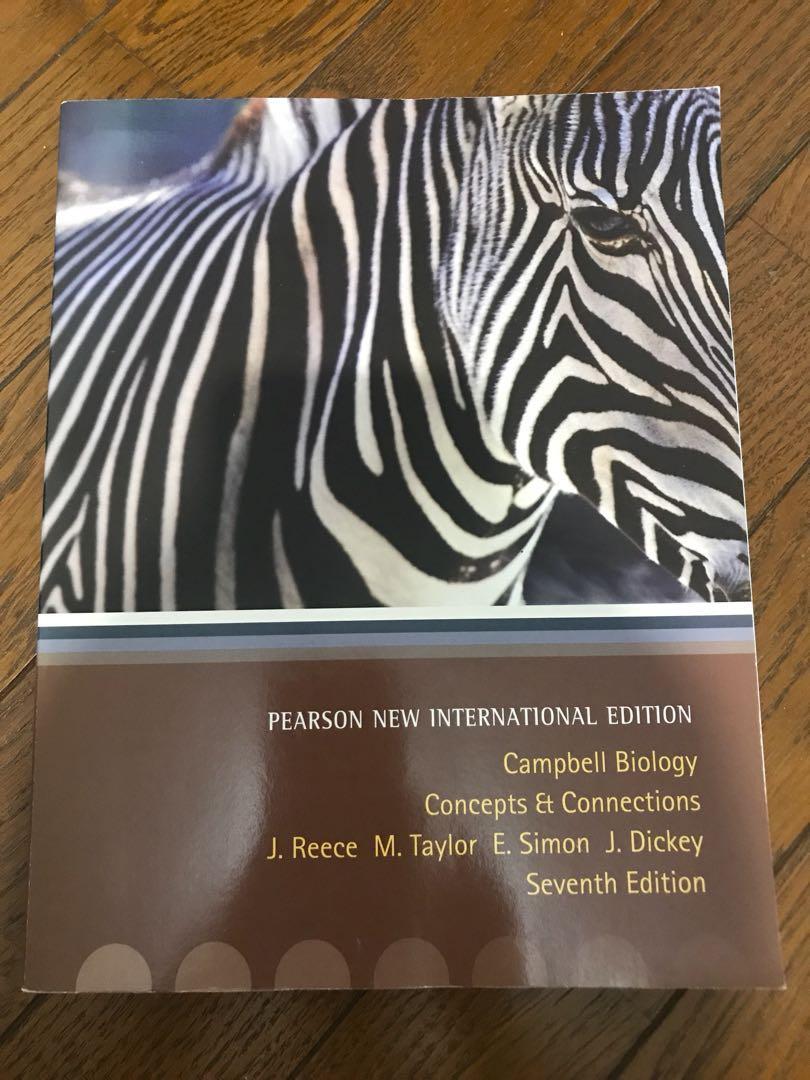- Campbell Biology 7th Edition Online
- Campbell Biology Concepts And Connections 7th Edition
- Campbell Biology 7th Edition Pdf
- Campbell Biology Concepts And Connections 7th Edition Test Bank
- Campbell Biology 7th Edition Outline
Book Preface
Inspired by the thousands of students in our own classes over the years and enthusiastic feedback from the many instructors who have used our book, we are delighted to present this new, Seventh Edition. We authors have worked together closely to ensure that both the book and the supplementary material online reflect the evolving needs of today’s courses and students, as well as current progress in biology. Now titled Campbell Biology: Concepts & Connections to honor Neil Campbell’s founding role and his many contributions to biology education, this book has always had a dual purpose: to engage students from a wide variety of majors in the wonders of the living world and to show them how biology relates to their own existence and the world they inhabit. Most of these students will not become biologists themselves, but their lives will be touched by biology every day. Today, understanding the concepts of biology and their connections to our lives is more important than ever. Whether we’re concerned with our own health or the health of our planet, a familiarity with biology is essential. This basic knowledge and an appreciation for how science works have become elements of good citizenship in an era when informed evaluations of health issues, environmental problems, and applications of new technology are critical.
Concepts and Connections

Amazon.com: Campbell Biology: Concepts & Connections and Study Guide (7th Edition) (180): Reece, Jane B., Taylor, Martha R., Simon, Eric J., Dickey, Jean L. Intended for non-majors or mixed biology courses. Soar to New Heights with Campbell Biology: Concepts & Connections! Campbell Biology: Concepts & Connections continues to introduce pedagogical innovations, which motivate students not only to learn, but also engage with biology. The Eighth Edition of this market-leading book builds on its hallmarks of accuracy, currency, and a.
Concepts Biology is a vast subject that gets bigger every year, but an introductory biology course is still only one or two terms long. This book was the first introductory biology textbook to use concept modules to help students recognize and focus on the main ideas of each chapter. The heading of each module is a carefully crafted statement of a key concept. For example, “Two photosystems connected by an electron transport chain generate ATP and NADPH†announces a key concept about the light reactions of photosynthesis (Module 7.8). Such a concept heading serves as a focal point, and the module’s text and illustrations converge on that concept with explanation and, often, analogies. The module text walks the student through the illustrations, just as an instructor might do in class. And in teaching a sequential process, such as the one diagrammed in Figure 7.8A, we number the steps in the text to correspond to numbered steps in the figure. The synergy between a module’s verbal and graphic components transforms the concept heading into an idea with meaning to the student. The checkpoint question at the end of each module encourages students to test themselves as they proceed through a chapter. Finally, in the Chapter Review, all the concept statements are listed under the overarching section titles, explicitly reminding students of what they’ve just studied.

Connections Students are more motivated to study biology when they can connect it to their own lives and interests—for example, to health issues, economic problems, environmental quality, ethical controversies, and social responsibility. In this edition, blue Connection tabs mark the numerous application modules that go beyond the core biological concepts. Other connections are made in the chapter-opening essays and throughout the text. Moreover, we connect the content of each chapter to the grand unifying theme of evolution, without which the study of life has no coherence. This book remains the only non-majors biology text to connect every single chapter to evolution, with highlights featured in greentabbed Evolution Connection modules.
New to This Edition
New Big Ideas and Chapter Transit Maps In this Seventh Edition, we take our conceptual emphasis to the next level, reframing each chapter with a smaller set of overarching concepts—“Big Ideasâ€â€”that are introduced at the beginning of the chapter. Each big idea corresponds to a major section of the chapter, and they are tied together in a “transit map†that shows the route by which the student will proceed through the chapter.
More Engaging Narrative and a New Look With the goal of making the concepts of biology more accessible and increasing the overall friendliness of the book, every chapter in this edition makes greater use of analogies, intriguing facts, examples that relate topics to the student and the real world, engaging questions, and a more conversational tone. The fresh new design used for the pages and the redesign of many figures make the book more accessible. See pages 280–281 for an example.
New Scientific Discovery Modules This edition gives greater emphasis to “how we know what we know†through a new type of module, called Scientific Discovery and marked with an orange tab. For example, the new Module 16.11 introduces Koch’s postulates for identifying the cause of an infectious disease and relates how Australian microbiologist Barry Marshall used these criteria to demonstrate that most peptic ulcers are caused by a particular bacterium (a discovery that won him a Nobel Prize). Along with new Scientific Discovery modules created for this edition, we have recast Talking About Science modules and some other material from the last edition in the Scientific Discovery format to help make research advances more vivid to students. The improved introduction to the process of science in Chapter 1 will equip students to appreciate the many examples throughout the book of how scientific concepts emerge from observations and experimental evidence.
The Latest Science Biology is a dynamic field of study, and we have always taken pride in our book’s currency and scientific accuracy. For this edition, as always, we have integrated the results of the latest scientific research throughout the book. We have done this with careful thought, recognizing that research advances can lead to new ways of looking at biological topics; such changes in perspective can necessitate organizational changes in our textbook to better reflect the current state of a field. You will find a unit-by-unit account of new content and organizational improvements in the “New Content†section on pp. xvi–xvii, following this Preface.
New MasteringBiology® A specially developed version of MasteringBiology, the most widely used online tutorial and assessment program for biology, is now included with Campbell Biology: Concepts & Connections. The book’s authors have created over 200 new Mastering activities to help students understand core concepts. An average of five author-created activities per chapter help students learn vocabulary, extend the book’s emphasis on visual learning, demonstrate the connections among key concepts (helping students grasp the big ideas), and coach students on how to interpret data. Included online are 18 BioFlix® 3-D animations of difficult topics (with accompanying tutorials), new Video Tutor Sessions, MP3 Tutor Sessions, Discovery Channel™ Videos, and YouDecide and GraphIt! activities.
| Download Ebook | Read Now | File Type | Upload Date |
|---|---|---|---|
| Download here | Read Now Ads | May 30, 2020 |

Campbell Biology 7th Edition Online
Do you like this book? Please share with your friends, let's read it !! :)
How to Read and Open File Type for PC ?Biology: Concepts and Connections invites readers into the world of biology with a new revision of this best-selling text.
Campbell Biology Concepts And Connections 7th Edition

Campbell Biology 7th Edition Pdf
Author: Neil A. Campbell
Publisher: Benjamin-Cummings Publishing Company
ISBN: 0321512448
Category: Science
Page: 783
Campbell Biology Concepts And Connections 7th Edition Test Bank

View: 115